

This x That x Them x Those
The power of collaboration; what can we learn and how can we apply it to what we do?
Written by Craig Berry, Designer & Writer at Nomad.
A couple of years ago brands collaborating together, specifically in the fashion industry, was quite an uncommon thing; maybe once a season you’d see your favourite brand work together with either another brand, a designer or a franchise to create something fairly logical. Launching it with a big teaser, build-up and even a release party.
I used to imagine which two of my favourite brands would and could work together, even going as far as sketching logo mashups. Interestingly, some of my theoretical collaborations did actually happen – I’m totally sure I was the inspiration for those.
Now though, fashion collaborations are the norm and it seems we can’t go a week without seeing a big-name brand collaborating with another big-name brand in what can often seem quite frivolous, unnecessary or even subjectively stupid. Or is that the point? Partnerships between luxury brands and high-street brands were often seen as a form of brand dilution but now they are seen as a viable strategy for both/all brands involved.
Taking luxury brands as a reference seems logical as this is where these absurd or unusual (and unnecessary?) collaborations seem to happen. Sometimes it comes across as a luxury brand trying to stay relevant by jumping on ’cooler‘ mainstream brands such as Louis Vuitton x Supreme (2017), Alexander Wang x McDonald's (2019) or Gucci x The North Face (2021 & 2022) collaborations. All these examples feature brands so far removed from one another.
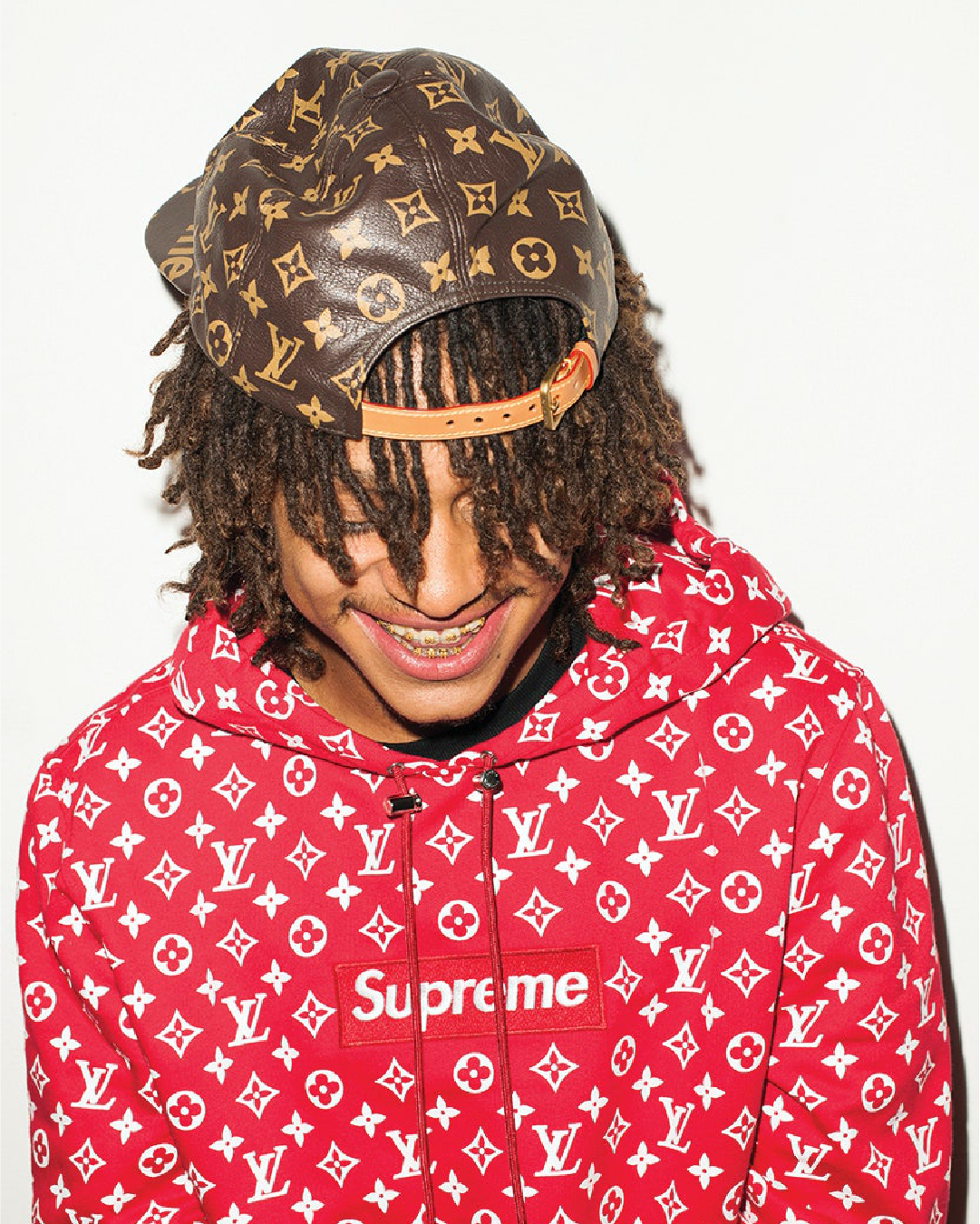
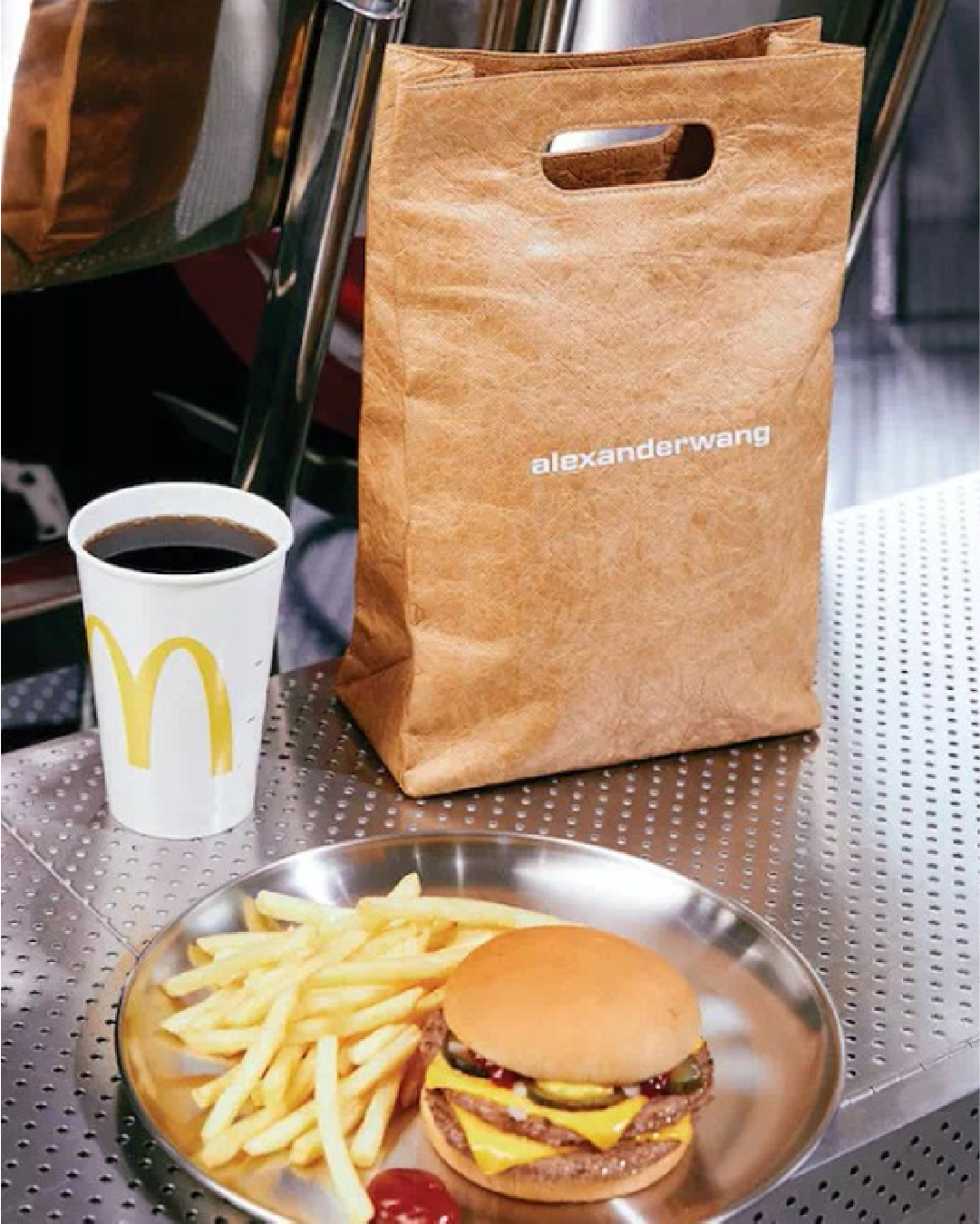

But again, is that the point? I think that consumers are bored of like-for-like brands collaborating on expected or obvious outcomes and these unusual collaborations are what we people really want.
There’s also been a recent shift in luxury brands opening themselves up by becoming more accessible to the masses and a wider customer demographic. Creating these collaboration pieces with high-street brands allows them to sell their products at a lower price point but still allows the consumer to feel like they are buying a luxury and desirable brand. Collaborations come as limited-edition items which in itself drives sales and engagement through demand and the ‘I’ve got to have it’ feeling.
When considering what makes a ‘successful’ and meaningful collaboration though, in my opinion, there are a few ways that brands can manage this.
A visually strong design.
There’s no point in two brands coming together to create something a bit, meh.
It’s also not necessarily about just putting one logo next to the other but taking the best of each brand and making something totally unique.
A perfect example of this, to me, is the Rapha x Palace (2020) collaboration. Does a professional cycling brand have anything to do with a skateboarding team? Kind of. They also have flagship stores on the same street in London but they’re really not related. But what makes this collaboration so good is the mash-up of the two brand mindsets: Rapha is seen as an elitist cycling brand that only middle-aged men who ride expensive bikes wear; it’s very minimal, skin tight and expensive. Palace is a more down-to-earth brand, very tongue-in-cheek both with how they talk and their designs which are far from minimal, loose-fit and affordable.
But what this collaboration does is show that Palace is a big enough brand to sit next to Rapha on the international cycling stage but allows Rapha to have a sense of humour and cut through the sea of boring cycling kits that exist in the peloton. You either love it or hate it – which in itself is a sign of a successful collaboration.
Acknowledgement of a culture.
Quite often a brand will look to work with a brand for an audience that they have absolutely no interest in at all but they just want to be able to tap into that market to sell things to them. Jumping into a specific culture with no prior knowledge or interest only up with a half-baked outcome that neither their regular customers want nor the culture they’re aiming at.
Sometimes though a collaboration can make total sense and you can really understand why two (or more) brands are working together. Carhartt WIP x La Haine (2020) coming together for the 25th anniversary of the film is a great example of this for me and although La Haine isn’t a brand but a 1995 film about Parisian urban teenagers causing trouble, it makes sense. The urban and street environment is familiar turf for both parties. Both have a 1990s feeling to them, La Haine due to it being filmed then but Carhartt WIP whose fashion style is very much inspired by this era. And because the brand even exists in the film with one of the main actors wearing it as well as the director himself, Mathieu Kassovitz, wearing it whilst shooting it.

Challenging a brand.
Sometimes a collaboration can come about when a brand wants to be challenged and flip their image therefore they’ll look to another brand, or creative to help with that; perhaps an expert in the field. Whether that’s to create something with a local community to tackle a local issue or work together to develop something that is more sustainable than anything they’ve ever done before. An example of this would be the Adidas x Sean Wotherspoon (2020) SUPEREATH shoe collection.
Adidas looked to Wotherspoon, as a creative, staunch vegan and ‘eco-warrior’, to create a new Superstar model with a sustainable, vegan-first design that also endeavours to end plastic waste. This kind of collaboration could have been done in-house by Adidas but they chose to lean on the experience of Wotherspoon and use his style to create something that would stand out. Also collaborating with a high-profile designer and influencer only brought more attention to the shoe during its launch allowing for more people to see it and to learn and understand sustainability in the footwear industry.

I also don’t think that it wouldn’t be unreasonable to suggest that this trend of weird and unexpected collaborations is thanks to the work of the late multi-hyphenate Virgil Abloh and comes from his methodology and approach to design. Looking back at a blog post I wrote in 2019 about Abloh it’s clear to see the amount of collaborations he was involved with in a short amount of time with multiple big-name projects each year either through his own name, his brand Off-White, his employer Louis Vuitton or with his friends.



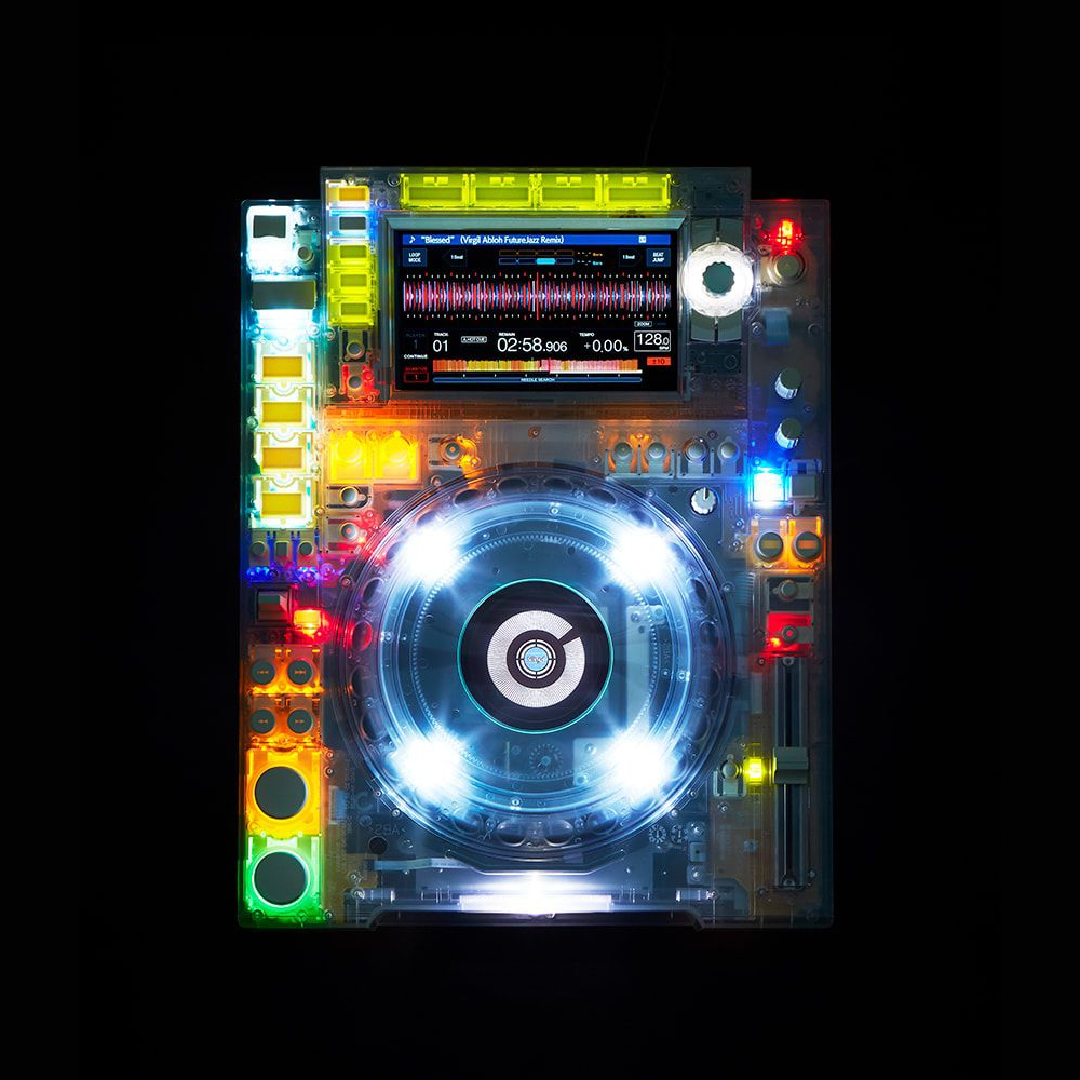
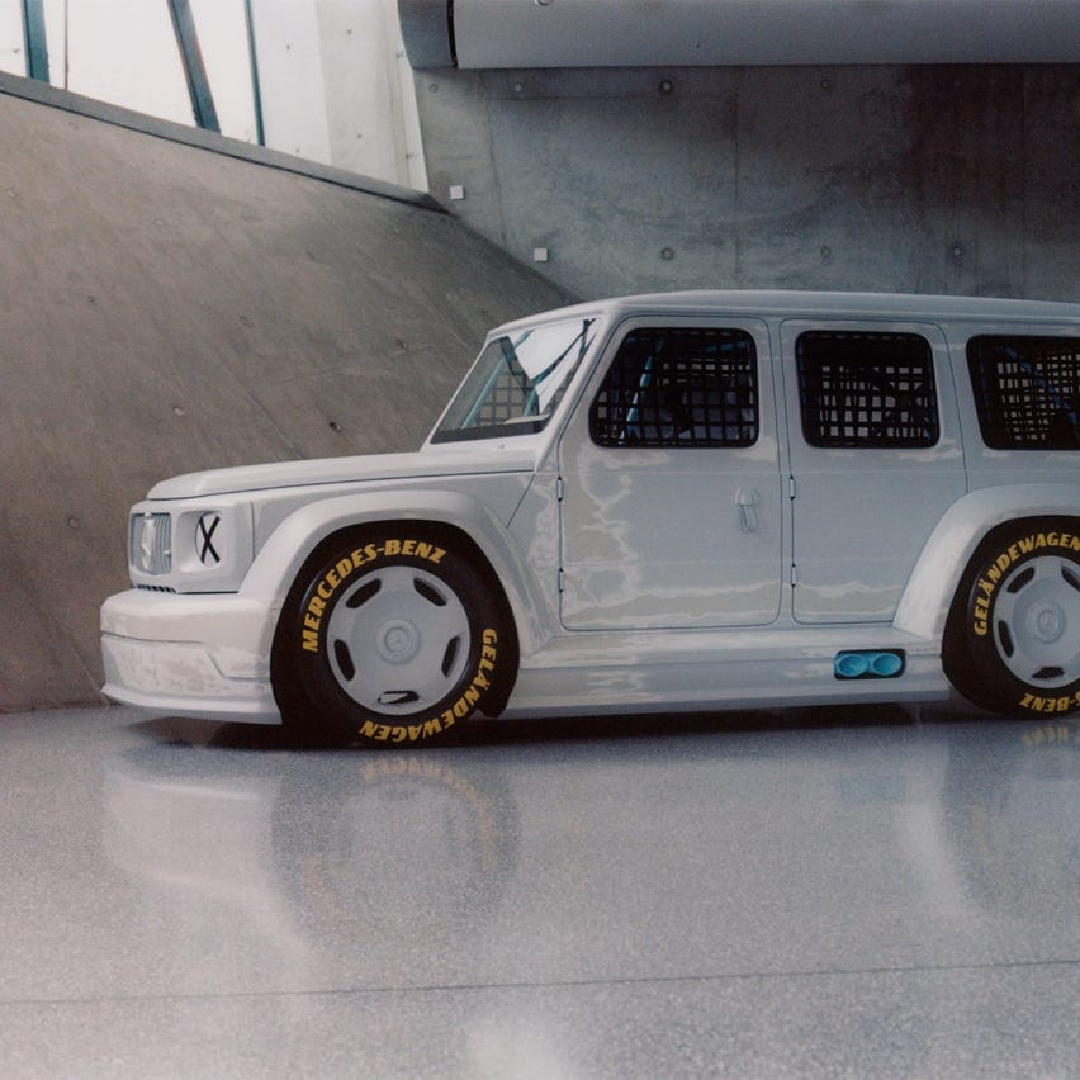




A collaboration is also an opportunity for a brand to create something specific and instead of them making their own bad version, they can work together with the industry leader and make it the best it can be. This was a tactic of Abloh’s with water bottles with Evian, suitcases with Rimowa, furniture with Vitra, DJ decks with Pioneer, rugs with IKEA, champagne with Moët, G-Wagons with Mercedes, football boots with Nike, Clocks with Braun, high-heels with Jimmy Choo, boots with Timberland, jeans with Levi’s, jackets with Moncler and many, many more all getting the Abloh treatment; turning everyday ‘things’ into highly sought-after and lauded ‘pieces’.
‘I believe being a fashion designer is selling it short if it’s just limited to making clothes.’
Virgil Abloh on the preconceived idea of what a designer is.
Of course, collaboration is not unique to the fashion industry, it’s just that fashion—wearing clothing in general and the popularity of fashion brands—is such an integral part of everyone’s day-to-day life, that this is the most commonly noticed place where collaborations happen.
Collaborating in real life happens on a daily basis for most people – it doesn't have to be a ‘this x that’ or a ‘them x those’ situation but generally working in a team is a collaborative experience.
The power of collaboration is the bringing together of people, each with different skill sets, talents, thoughts, ideas and energy. It makes us think in different ways as we each have our own goals and strategies. It allows us to learn new things and ways of thinking through being open to other people’s ideas but also to have the willingness to change our own thinking.
In a design studio environment collaboration happens in various ways – of course, the collaborative teamwork of the studio with designers and creatives working together to think of ideas, develop and produce great creative work but also the collaboration between creative and strategy – working together on a brief to give a clear direction for visual ideas, between creative and project management – working together to ensure each project runs smoothly and the client is always happy, between the studio and the client – working together to ensure the best possible visual outcome, between the studio and freelance specialists – working together to create amazing illustrations, animation, 3D work and more and between studio and studio – working together to bring together teams of talented people who might specialise in a specific field.
When I jumped from a design studio to an advertising agency a few years ago, collaboration was even more important as I discovered more about the creative process in terms of making an advert. Instead of collaborating with other designers or creatives in a graphic design environment, here I was collaborating and working with art directors who brought ideas, copywriters who bring life to words, photographers and film crews who have their own styles and visions, producers who make it all happen and PR teams who bring it to the public.
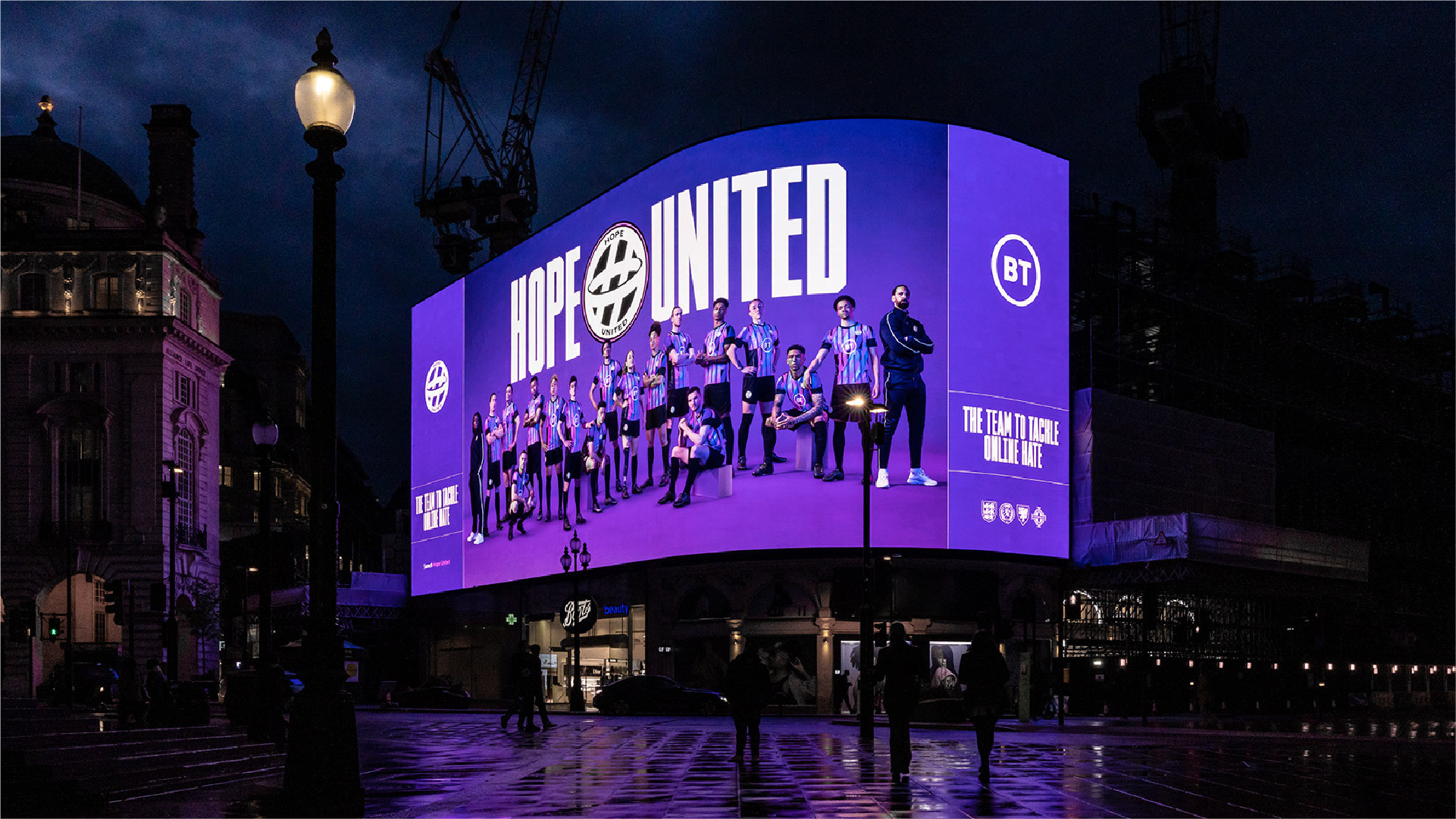
A brilliant example of groups of creatives coming together to make something great is our work for BT with Hope United where, in collaboration with Saatchi & Saatchi, we built a symbol of hope and unity.
Born from the BT logo and designed as a digital-first badge, packed full of meaning, the logo expands into a wider graphic system used to create an iconic kit, worn by the best players from all four nations and inspiring the wider Hope United campaign.
With Saatchi & Saatchi, the campaign was rolled out on TV, OOH and in print over the summer of 2021.
‘From the moment we briefed Nomad on the design for Hope United we felt like the energy behind the project increased. We began a fast pace process of creative sharing sessions where Nomad designers would present their ideas for the shirt and we’d help build on those until we found the final result – we never left a session without progressing the concepts together. Combining the tastes of 10 different creative people with the need for a clear narrative for the design, whilst maintaining some elements of the brand isn’t easy, but when you keep the process positive and inclusive it’s amazing how you can end up with something that everyone loves. The key to our success between Saatchi & Saatchi and Nomad was our like-minded approach to football culture and craft.’
Will Brookwell – Creative Director, Saatchi & Saatchi London.



‘The whole point of collaboration is that you give and take from each other, and that's how you create things that are totally new.’
Another quote from Abloh that summarises everything that is good about collaboration whether that’s in fashion or not.
Everyone should be open to the idea of working with each other; instead of closing doors and wanting to do everything our own way, the best things happen when we open up and share and work together.

